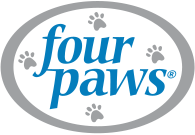Everything You Need to Know About Dog Shedding
As a pet parent, you’re probably quite familiar with dog shedding. Some breeds such as Poodles shed very little, while other breeds like Siberian Huskies shed a great deal. Shedding is a normal function that helps animals get rid of their old winter or summer coat and grow a new, seasonally appropriate one.
Why Do Dogs Shed?
Every hair on your dog’s body has its own “life cycle” with three phases:
- Anagen phase: When hair actively grows
- Catagen phase: When hair stops growing
- Telegen phase: When hair falls out and gets replaced by new hair
As your dog’s hair reaches its predestined length and begins to fall out, shedding occurs.
When this happens at once in the undercoat, it’s known as “The Shed.” Most of what is shed is the thick, protective undercoat. Breeds such as Siberian Huskies “blow their coat” twice yearly, which might tempt some pet parents to plan a vacation and let a sitter deal with those furry strands of love!

When Is Dog Shedding Season?
Historically when dogs lived outside year-round, profuse shedding was restricted to spring and fall. However, today’s indoor dogs can be found moderately shedding all year. Your fur friend’s breed also plays a role in how frequently they shed. If you have a double-coated breed such as a Golden Retriever or a Pomeranian, you will likely find yourself preparing for dog shedding season during spring and fall.
Allergies, diet, and stress are all factors that may lead a dog to shed more heavily than what is considered usual for their breed. Most instances of dog shedding are normal, but unusual shedding patterns can warrant a trip to the vet: hair loss in patches, symmetrical hair loss on certain parts of the body, hair loss accompanied by another skin problem, and so on.

Highest and Lowest Shedding Breeds
Although no dog is entirely maintenance free, some breeds tend to shed more than others. These are some primary examples of dogs who tend to shed least and most.
Hairless Dog Breeds
As you might expect, hairless dog breeds do not shed and require minimal grooming. However, special care must be taken to protect them from sunburn and cold weather.
- American Hairless Terrier
- Chinese Crested Dog
- Peruvian Inca Orchid
- Xoloitzcuintli
Low-Shedding Dog Breeds
Some of the most popular dog breeds are light shedders, which is great news for people who are allergic to dander. Keep in mind that many of these breeds have hair rather than fur, which makes them more prone to mats.
- Basenji
- Bichon Frise
- Italian Greyhound
- Maltese
- Miniature Schnauzer
- Poodle
- Portugese Water Dog
- Scottish Terrier
- Shih Tzu
- Yorkshire Terrier
High-Shedding Dog Breeds
You might think big dogs with long coats shed the most, but this is a common misconception. Some small and short-coated breeds are among the heaviest shedders.
- Akita
- Alaskan Malamute
- Beagle
- Chow Chow
- German Shepherd
- Golden Retriever
- Great Pyrenees
- Labrador Retriever
- Pembroke Welsh Corgi
- Pug
- Saint Bernard
- Siberian Husky

How to Keep Your Dog from Shedding Excessively
Although there is no way to stop a dog from shedding, you can follow these guidelines to reduce the amount of loose hair flying around your home.
Brush Every Day
The most important step you can take is to brush your dog every single day. Regular brushing not only gets rid of loose hair, but also stimulates the oils through the living hair to make it softer and sleeker. This healthy hair is more likely to stay attached to your dog’s body (and off the furniture)!
It’s also vital to use the correct brush. A dog shedding rake is a must-have because it removes dead hair from the undercoat without damaging the outercoat. Dogs who shed heavily also benefit from slicker brushes, shedding blades, grooming gloves, and mat removers. If your dog is short-haired, a brisk comb-over with a curry brush will do wonders. The best time to bring out the heavy equipment for long-haired breeds is late winter and mid-fall, just before the new coat starts growing in.
Feed a Healthy Diet
Feed your dog an appropriate diet with adequate fatty acids and digestible protein. Dogs with food allergies are highly prone to diet-related shedding, so be aware of any dietary restrictions before choosing food for your fur friend. Dehydration also causes healthy hair to shed, so don’t forget to provide your dog plenty of fresh cool water—especially if their primary diet is a dry kibble.
Additionally, you may wish to add a little olive oil, flaxseed oil, or fish oil for dogs to your furry friend's food, which contains Omega-3 fatty acids essential to their health.
Bathe Frequently
Speaking of Omega-3s, our Magic Coat Reduces Shedding Shampoo is specially formulated with fatty acids to help prevent excess shedding. Bathe your pup often, working the shampoo into a sudsy lather and rinsing your dog thoroughly to wash away loose hair. Once you’re finished, quickly dry your pup with a towel and soak up as much excess water as possible.
Control Pests on Your Pet
Pests make dogs scratch, which leads to skin irritation and ultimately increased shedding. Control fleas and ticks on your dog’s skin to help minimize discomfort and shedding. Although these pests can be found anywhere on the body, they tend to reside on the head, neck, rump, and underside. Consult your vet if you have trouble removing pests or if you think your dog has a skin problem.
Shedding is a natural process for dogs. Understanding when and why it occurs, buying the right grooming supplies, and providing a healthy diet will help you keep both your pooch and home clean for many shedding seasons to come!











